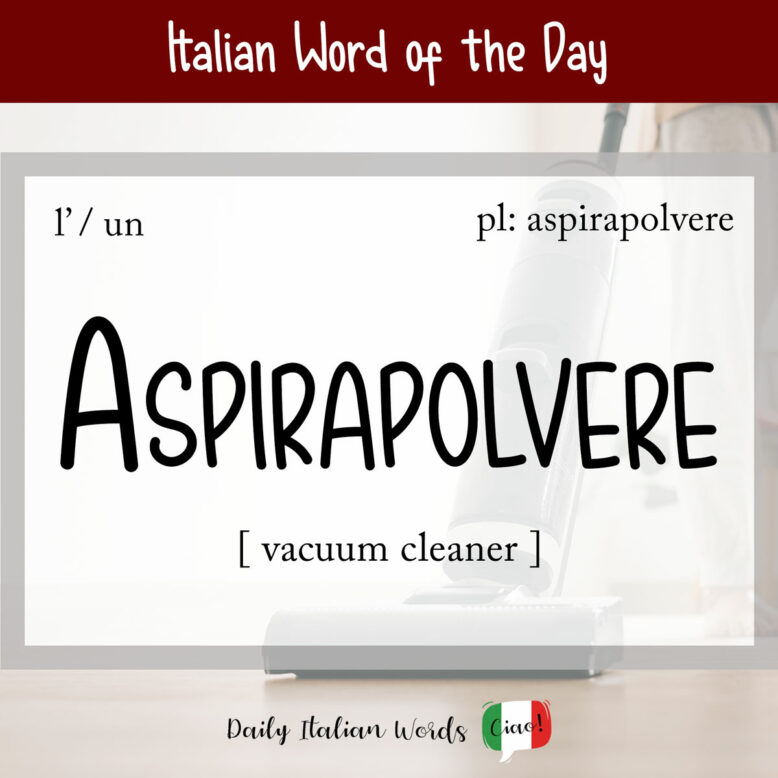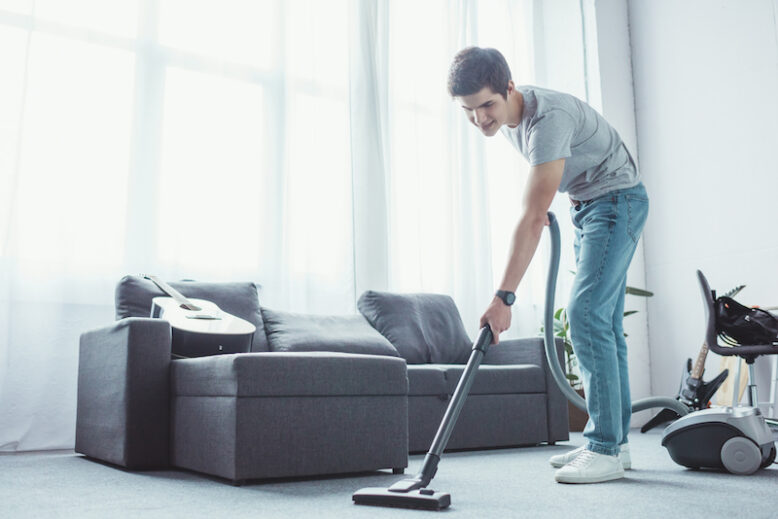As a toddler, my son was pretty fearless. However, he did have one archenemy: the dreaded aspirapolvere (vacuum cleaner / hoover)!

Aspirapolvere is an invariable masculine noun, so it does not change in its plural form. Here are the definite and indefinite articles you should use with this word:
- l’aspirapolvere = the vacuum cleaner
- gli aspirapolvere = the vacuum cleaners
- un aspirapolvere = a vacuum cleaner
- degli aspirapolvere = some vacuum cleaners
It is composed of the verb aspirare (to suck / to inhale) and polvere which means dust.
Here are a few useful verbs you might see paired with this word:
- passare l’aspirapolvere = to vacuum (lit. to pass the vacuum)
- accendere l’aspirapolvere = to turn on the vacuum cleaner
- spegnere l’aspirapolvere = to turn off the vacuum cleaner
- svuotare l’aspirapolvere = to empty the vacuum cleaner
- (ri)caricare l’aspirapolvere = to (re)charge the vacuum cleaner
Puoi mettere in carica l’aspirapolvere? Bisogna passarlo prima che arrivino gli ospiti.
Can you charge the vacuum cleaner? We have to vacuum before the guests arrive.

Some of the different kinds of vacuum cleaners you can buy include:
- aspirapolvere a traino = canister vacuum cleaner (comes with a suction hose and separate unit for the motor and receptacle)
- aspirapolvere senza fili / sacco = a cordless / bagless vacuum cleaner
- scopa elettrica = electric broom
- battitappeto = carpet sweeper
- robot aspirapolvere = robotic vacuum
- aspirabriciole = handheld vacuum (lit. crumb sucker)
Heather Broster is a graduate with honours in linguistics from the University of Western Ontario. She is an aspiring polyglot, proficient in English and Italian, as well as Japanese, Welsh, and French to varying degrees of fluency. Originally from Toronto, Heather has resided in various countries, notably Italy for a period of six years. Her primary focus lies in the fields of language acquisition, education, and bilingual instruction.


